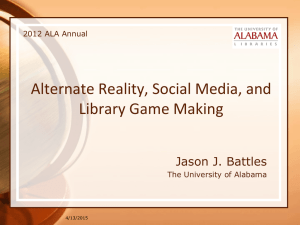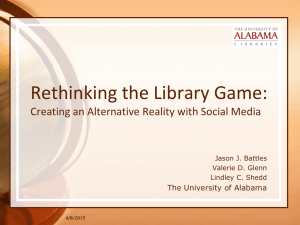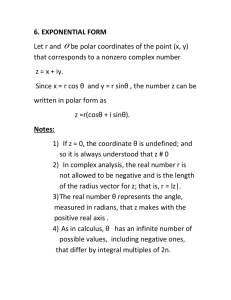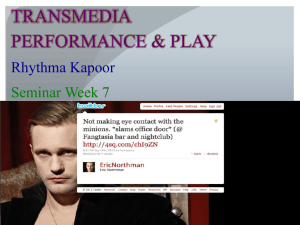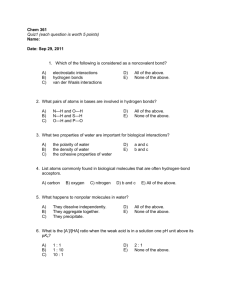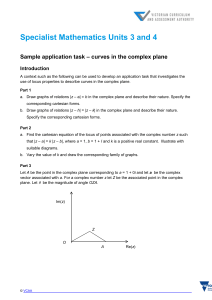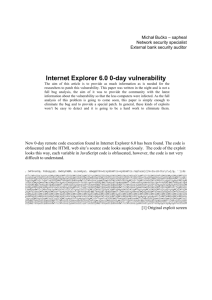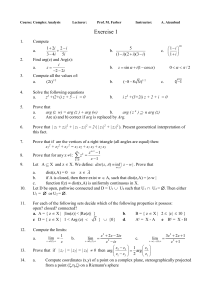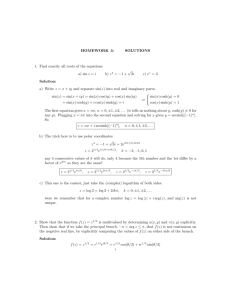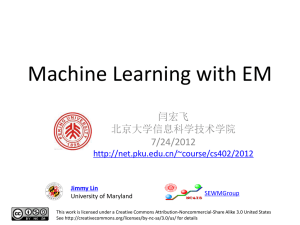example PPT presentation
advertisement
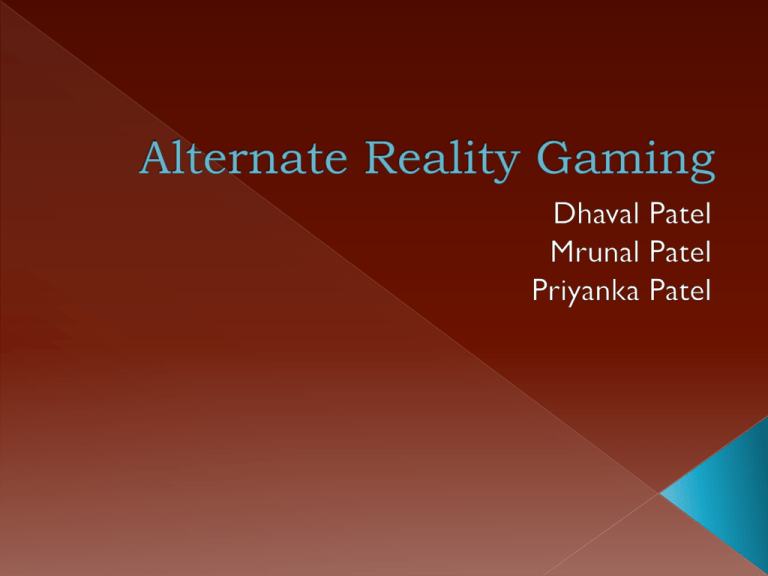
Introduction – (Mrunal Patel) Game or not a Game??? – (Priyanka Patel) Types of ARGs – (Dhaval Patel) www.reperio.ca http://www.argn.com/ http://whysoserious.com/ http://www.mirlandano.com/arg-quickstart.html http://news.bbc.co.uk/2/hi/africa/7638581.stm http://www.youtube.com/watch?v=1pd74It-yVo Telling and producing a story while the audience interacts with ARG › May converse with fictional characters › Ideas produced by players might be incorporated into plot Direct interaction is not required to affect the narrative In simpler words › New genre of games that encourages players to interact with fictional world using the real world to do it You are spending some time exploring the internet Someone points you to couple of sites Tells you it’s a crazy mystery about some missing monkeys So, you visit a site everyonelovesmonkeys.com Everyonelovesmonkeys.com › Pictures of monkeys Everyonelovesmonkeys.com › List of monkey zookeeper’s email addresses bob@everyonelovesmonkeys.com john@everyonelovesmonkeys.com evan@everyonelovesmonkeys.com crazymonkey@crazymonkeyman.com Intrigued, you visit crazymonkeyman.com › Concern that monkeys have been replaced by robomonkeys! What you have done? › Used your real world computer to explore a bit of fictional world › You have also solved your first ARG puzzle You decide to send a little email to crazymonkey@crazymonkeyman.com to inquire more about his concerns You receive a reply What you have done? You communicated with the fictional world using your real world email You notice a contact number and decide to give a call › Someone answers your call What you have done? Now you are interacting with a fictional world using your real world phone and your real world i.e., “you” Conclusion › You were playing ARG when you were Exploring the websites Sending the email Calling the phone number What is a game? › ….an activity which is essentially: Free (voluntary), separate [in time and space], uncertain, unproductive, goverened by rules, make-believe.” - Roger Caillois (1961) 4 Paradigms of a Game › Defined rules › Defined playing space › Set of components/game pieces › Win/Loss scenarios Rabbit Holes Puppet masters Interactions Real World Events Compelling Storyline Collaborative Gameplay Delivery tools › Web pages › email messages › phone calls › print-based mailings Dreadnot (1996) › http://web.archive.org/web/20000229151210/www.sfg ate.com/dreadnot/index.html Blair Witch project (1999) Go Games and Nokia Games The Beast I love Bees Promotional Campaign developed by Microsoft and Dreamworks for Steven Spielberg's movie "Artificial Intelligence” Clues planted in the postersDiscussion group "Cloudmakers“ www.cloudmakers.org 3 million unique visitors by July •Launched in July 2004 to promote Halo2 http://www.youtube.com /watc h?v=VeyskiiWRdI&featur e=related Aim: To attract gamer and media interest in the Halo2 release. Ilovebees.com seemed to be infected Gamers help AI program (“the Operator”) Operator’s Goal › Fix the spacecraft › Gather the crew members › Deactivate strange artifact (“The Artifact”) › Return to Halo time and fight (“The Covenant”) army Successful experience with the ARG “The Beast” 3 storywriters › Storyteller › Community Lead › Technology and Sound effects Assemble the story of the Operator 3 primary channels › Hidden HTML code, email exchanges, sound files, and images › Voice clips sent to payphones › A blog maintained by an imaginary character in the game The main goal is to create a buzz for the new product Traditional marketing › Traditional ads are expensive › Time consuming › Often highly ineffective › Printed ads and commercials lacks power to create necessary buzz Advertisement with ARG › Highly effective › Fairly inexpensive › Draws target audience into the story › Treasure hunting One of the successful ARG of recent times ARG was one of the major reason for the success of the film Played across 75 different countries More than 10 million participants Used internet, mobile phones, real world events, videos etc Known as 33 keys ARG Mazda’s most successful marketing campaign More than expected people took part in the ARG Events occurred over four weeks Took place across multiple platforms (Radio, online, etc.) Game took place in Quebec (Canada) Main Goal: Solve puzzles to find 33 keys hidden in different parts of Quebec People win prizes by solving this ARG Funded through participation fees, in game advertisement of other products Example › Perplex City 200K prize money Finding Receda Cube Using ARG to solve real world problems Introduce plausibility as a narrative feature to pull players into the game Serious subject matter distinguish Serious ARGs from mainstream ARGs in design Examples › World Without Oil › Traces Of Hope › The Black Cloud Binding medium › ARG uses multiple media › Video games uses special software Non player characters › ARG – Real time by puppet master › Computer AI RPG vs. LARPG › ARG don’t have fixed rules › Players discover rules through trial and error How secured it is for a real person to play in a real world? Do alternate reality game damage children's social skills? If ARG's can spark players to solve very hard fictional problems, could the games be used to solve real world problems?
